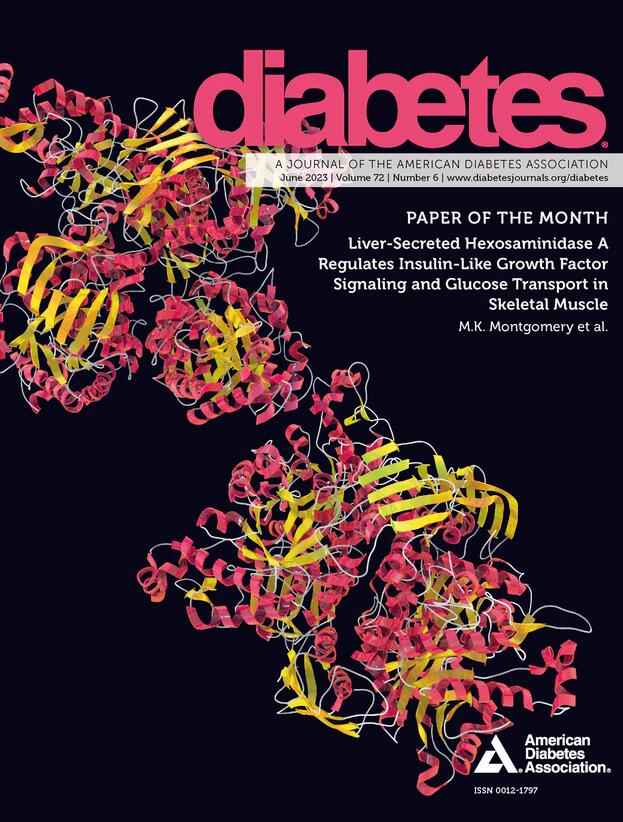Neuroprotective Effect of a Novel Soluble Guanylate Cyclase Activator (sGCa) Runcaciguat in Diabetes and Ischemic Retinopathy
IF 6.2
1区 医学
Q1 ENDOCRINOLOGY & METABOLISM
引用次数: 0
Abstract
Oxidative stress has a major pathogenic role in diabetic retinopathy, and neuroretina dysfunction is recognized as an early and important problem. Soluble guanylate cyclase (sGC) has been implicated for its neuroprotective effects in the central nervous system, but its role in the retina remains unclear. Here we demonstrated expression of sGC subunits GUCY1A1 and GUCY1B1 in healthy human and rodent retina in vascular cells and neuronal elements including retinal ganglion cells, bipolar, and amacrine cells. We provided evidence using in vitro and in vivo studies that sGC function is impaired by oxidative stress-induced damage in retina. The sGC activator runcaciguat activated sGC in multiple retinal cell types and counteracted the inhibitory effect of damage induced by oxidative stress on the retina and retinal cells. In the rat retinal ischemia-reperfusion model, runcaciguat treatment improved neuroretinal and visual function as measured by electroretinography and optokinetic tracking and resulted in retinal morphologic improvement. In the STZ-induced diabetic rat model, runcaciguat significantly improved neuroretinal function and improved inner plexiform layer thickness. These studies suggest that sGC signaling is involved in neuroretinal function and vision and that diabetes negatively affects this pathway, supporting restoring sGC activation as a novel therapy for early DR.新型可溶性鸟苷酸环化酶激活剂(sGCa) Runcaciguat对糖尿病和缺血性视网膜病变的神经保护作用
氧化应激在糖尿病视网膜病变中起主要的致病作用,神经视网膜功能障碍被认为是一个早期和重要的问题。可溶性鸟苷酸环化酶(sGC)在中枢神经系统中具有神经保护作用,但其在视网膜中的作用尚不清楚。在这里,我们证实了sGC亚基GUCY1A1和GUCY1B1在健康人和啮齿动物视网膜的血管细胞和神经元元件(包括视网膜神经节细胞、双极细胞和无突细胞)中的表达。我们通过体外和体内研究提供了证据,证明氧化应激诱导的视网膜损伤会损害sGC功能。sGC激活剂runcaciguat激活多种视网膜细胞类型的sGC,并抵消氧化应激对视网膜和视网膜细胞损伤的抑制作用。在大鼠视网膜缺血-再灌注模型中,通过视网膜电图和光动力学跟踪测量,runcaciguat治疗改善了神经视网膜和视觉功能,并导致视网膜形态学改善。在stz诱导的糖尿病大鼠模型中,runaciguat可显著改善神经视网膜功能,改善内网状层厚度。这些研究表明sGC信号参与神经视网膜功能和视力,糖尿病对这一途径产生负面影响,支持恢复sGC激活作为早期DR的新疗法。
本文章由计算机程序翻译,如有差异,请以英文原文为准。
求助全文
约1分钟内获得全文
求助全文
来源期刊

Diabetes
医学-内分泌学与代谢
CiteScore
12.50
自引率
2.60%
发文量
1968
审稿时长
1 months
期刊介绍:
Diabetes is a scientific journal that publishes original research exploring the physiological and pathophysiological aspects of diabetes mellitus. We encourage submissions of manuscripts pertaining to laboratory, animal, or human research, covering a wide range of topics. Our primary focus is on investigative reports investigating various aspects such as the development and progression of diabetes, along with its associated complications. We also welcome studies delving into normal and pathological pancreatic islet function and intermediary metabolism, as well as exploring the mechanisms of drug and hormone action from a pharmacological perspective. Additionally, we encourage submissions that delve into the biochemical and molecular aspects of both normal and abnormal biological processes.
However, it is important to note that we do not publish studies relating to diabetes education or the application of accepted therapeutic and diagnostic approaches to patients with diabetes mellitus. Our aim is to provide a platform for research that contributes to advancing our understanding of the underlying mechanisms and processes of diabetes.
 求助内容:
求助内容: 应助结果提醒方式:
应助结果提醒方式:


